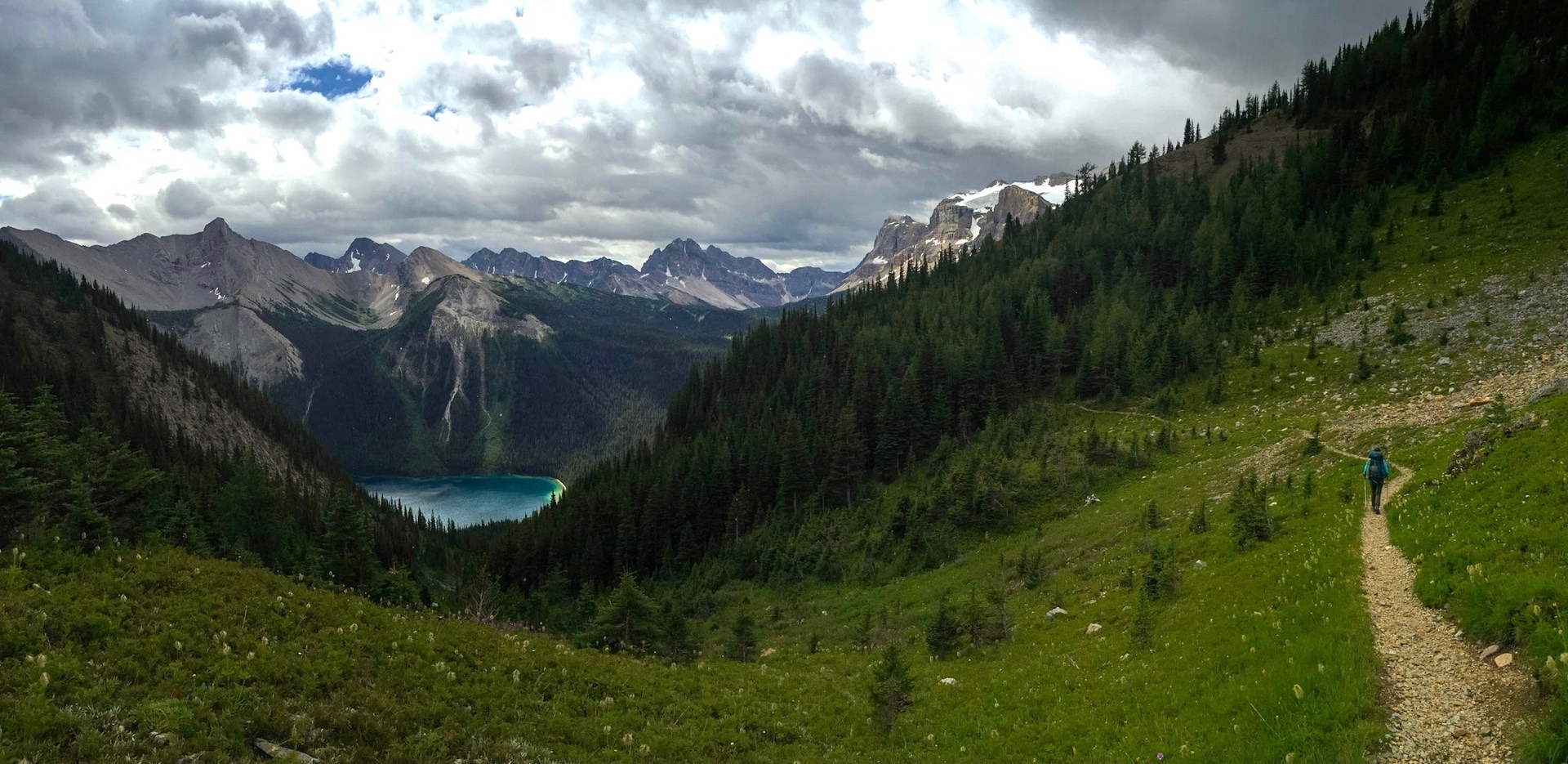You are here
It seems like it's always "that time of year," the time of year to get in shape. Whether it's your New Year's resolution, your pre-summer push, or something you already work into your daily routine, it's never a bad time to give your body the attention it deserves and needs. That means getting some fresh air, moving more, and pushing your physical limits.
Fresh Air
Have you ever noticed how you feel invigorated as soon as you find your rhythm on the trail? There's a scientific reason. Breathing in all that oxygen is energizing. The more oxygen in your blood stream, the more energized you'll feel. In addition, fresh air can boost your mood. “Research shows that hiking has a positive impact on combating the symptoms of stress and anxiety,” says Gregory A. Miller, Ph.D, president of the American Hiking Society. “Being in nature is ingrained in our DNA, and we sometimes forget that." Lastly, the smells in nature can reduce stress and increase happiness. Research suggests that the smell of wildflowers, pine trees, and even rain all have positive effects on our mood and ultimately our well-being.
Move More, Hike More
Don't let your current condition define your adventures. Instead, acknowledge where you are, decide where you want to be, and work to bridge the gap between the two. It's important to work exercise into your daily life, but if you're like me and don’t like to hit the gym or go running, you'll need to find another way to get into shape and tackle those summits you've had on your list.
If you have a goal in mind, you can use the 10 percent rule as a guideline to help you plan a series of hikes that will prepare you for your goal. Start with the goal distance and elevation gain on week 10, the week of the actual goal hike, and work backward, subtracting roughly 10 percent each week for 10 weeks. As you train, try to hike with the pack weight you plan on hiking with on your goal hike.
For example, let’s say you’re interested in hiking to Paradise Park from Timberline Lodge on Mount Hood. This hike climbs 2,300 feet of elevation over 11 miles. If you give yourself 10 weeks to train for this goal, your training plan would look something like this:
| Week | Miles | Elevation |
| 1 | 4.2 | 800 ft |
| 2 | 4.7 | 900 ft |
| 3 | 5.2 | 1,000 ft |
| 4 | 5.8 | 1,250 ft |
| 5 | 6.5 | 1,375 ft |
| 6 | 7.3 | 1,525 ft |
| 7 | 8.1 | 1,700 ft |
| 8 | 9 | 1,850 ft |
| 9 | 10 | 2,000 ft |
| 10 | 11 | 2,300 ft |
If you're training for the Enchantment Lakes Thru Hike that is 17.6 miles and 6,500 feet of elevation, your 10-week program would look something like this:
| Week | Miles | Elevation |
| 1 | 6.5 | 2,400 ft |
| 2 | 7.2 | 2,700 ft |
| 3 | 8.1 | 3,000 ft |
| 4 | 9 | 3,300 ft |
| 5 | 10.2 | 3,750 ft |
| 6 | 11.3 | 4,200 ft |
| 7 | 12.6 | 4,700 ft |
| 8 | 14 | 5,250 ft |
| 9 | 15.5 | 5,850 ft |
| 10 | 17.6 | 6,500 ft |
Or Half Dome in Yosemite National Park at 16.5 miles and 4,863 feet of elevation:
| Week | Miles | Elevation |
| 1 | 6.4 | 1,600 ft |
| 2 | 7.2 | 1,800 ft |
| 3 | 8 | 2,100 ft |
| 4 | 8.7 | 2,400 ft |
| 5 | 9.7 | 2,700 ft |
| 6 | 10.8 | 3,000 ft |
| 7 | 12 | 3,400 ft |
| 8 | 13.3 | 3,800 ft |
| 9 | 14.8 | 4,300 ft |
| 10 | 16.5 | 4,800 ft |
In my experience, it’s the elevation gain, not the mileage, that challenges most people in the mountains. So prioritize getting the calculated elevation gain in your training. You can be a bit more flexible with the mileage.
Keep in mind that this is a template, not a commandment. If you struggle to complete a hike, repeat that distance and elevation gain the following week. Progress at a reasonable pace to avoid injuries. An injury will be a far greater setback than an extra week of training. Likewise, if you can already hike 6 miles comfortably, then you might add the miles and elevation gain faster than the recommended program. Even better, pick a more difficult target and challenge yourself to do something outside your comfort zone.
Like any outdoor activity, hiking requires skill and gear in addition to physical strength. Variables like weather, trail surfaces, and elevation profiles can make hikes with similar lengths feel totally different. Notice which shoes and clothing work the best for you in certain conditions. And be sure you can navigate the trails you use for training. But mostly, get out there and have fun! Hiking is an incredibly rewarding activity that engages body, mind and soul. By increasing your hiking mileage and increasing elevation over time, you can build the strength and endurance you’ll need to take on longer and steeper trails.





Comments
Have a great trip to the lodge!
I'm confused, though. Do we hike/climb the week 1 goals every day of week 1, week 2 goals every day of week 2, etc.? Or do we go by feel? Your thoughts on this are valuable.
Thanks again, and Happy Trails!
John and Sue
Sign In and share them.